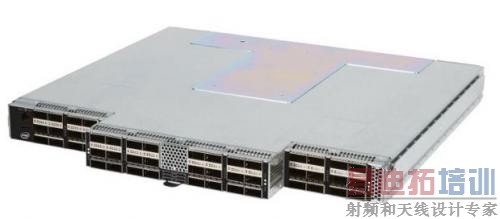- 易迪拓培训,专注于微波、射频、天线设计工程师的培养
英特尔想靠Omni-Path独霸数据中心几无可能?
英特尔进来推出其针对数据中心的全方位网络架构Omni-Path;尽管Omni-Path可提供高速光纤通信,但它并不是基于英特尔的硅光子技术;Omni-Path跟竞争对手类似产品相比似乎并不无绝对优势;实际案例中,Omni-Path也不能有效阻止数据中心采用非英特尔架构的处理器。
Summary
Intel recently introduced its proprietary network fabric for the data center, Omni-Path. Although Omni-Path can provide high-speed fiber optic communication, it doesn't use INTC's silicon photonics technology. Omni-Path may not be successful against similar products from competitors. In any case, Omni-Path does not prevent data centers from adopting non-Intel processors.A recent article on SA claims that Intel's (NASDAQ:INTC) optical network fabric (Omni-Path) constitutes a locked door to the data center that competitors cannot enter. But the reality is that INTC's technology represents an attempt to enter an existing and mature market for data center network fabrics. The company's efforts in this area are akin to its efforts in wireless modems. It is coming from behind and attempting to take market share from more experienced incumbents.

Optically Obvious
SA contributor Arnold Frisch makes some good points about the need for fiber optic networking in his article Intel Optics Closes All Openings Into The Server Market. He points out that data centers have become very large and power-consuming enterprises. The sheer size and the ever increasing need for low latency and high data throughput communications make the use of copper wire cables impractical.
Frisch states the following:
Intel decided that the best solution would be to reduce the power dissipated in the network fabric by going optical. This would essentially eliminate power dissipation in all of the electrical wiring, carry the signals between the various server modules, memories, and system I/O. But this required development of key technologies and components.
The statement may be correct in itself, but it leaves the reader with the impression that Intel's "decision" to go optical is somehow unique to it. In fact, large data centers have been using fiber optics for years.
Data centers have been able to use a variety of fiber-based communications protocols and technologies, including 100 Gbs Ethernet over fiber, and fiber channel. For high-performance computing (HPC), InfiniBand optical network fabrics provide the highest performance.
These optical network fabrics are implemented through extremely high throughput switches similar to Ethernet switches. Mellanox (NASDAQ:MLNX) makes a line of InfiniBand fabric switches such as the SB7890.

As I'll discuss shortly, the key performance features of the Mellanox InfiniBand system are essentially reproduced by Intel's competing technology, called Omni-Path. The key difference between the Mellanox system and Omni-Path is that the Mellanox system is currently for sale, whereas the Omni-Path system is not yet available.
Intel has done some interesting work in silicon photonics, which involves integrating the optical laser for fiber communication directly onto the silicon die of the processor. There would be electrical power advantages in a fiber-to-the-processor approach. But I question whether it will ever be practical or cost effective.
Putting the lasers on the silicon is technically difficult in itself and will always be a cost delta compared to normal processor fabrication. Also, there's the problem of connecting the fiber output of the processor to the rest of the data center. The fibers would have to be "connectorized" at a patch panel so that the data center operator could have flexibility in making and breaking cable connections.
This actually turns out to be challenging, which is why the industry opted for the QSFP28 electrical connector instead. You can make and break electrical connectors like the QSFP28 a large number of times without signal degradation. Optical connectors are much more delicate and not nearly as reliable.


